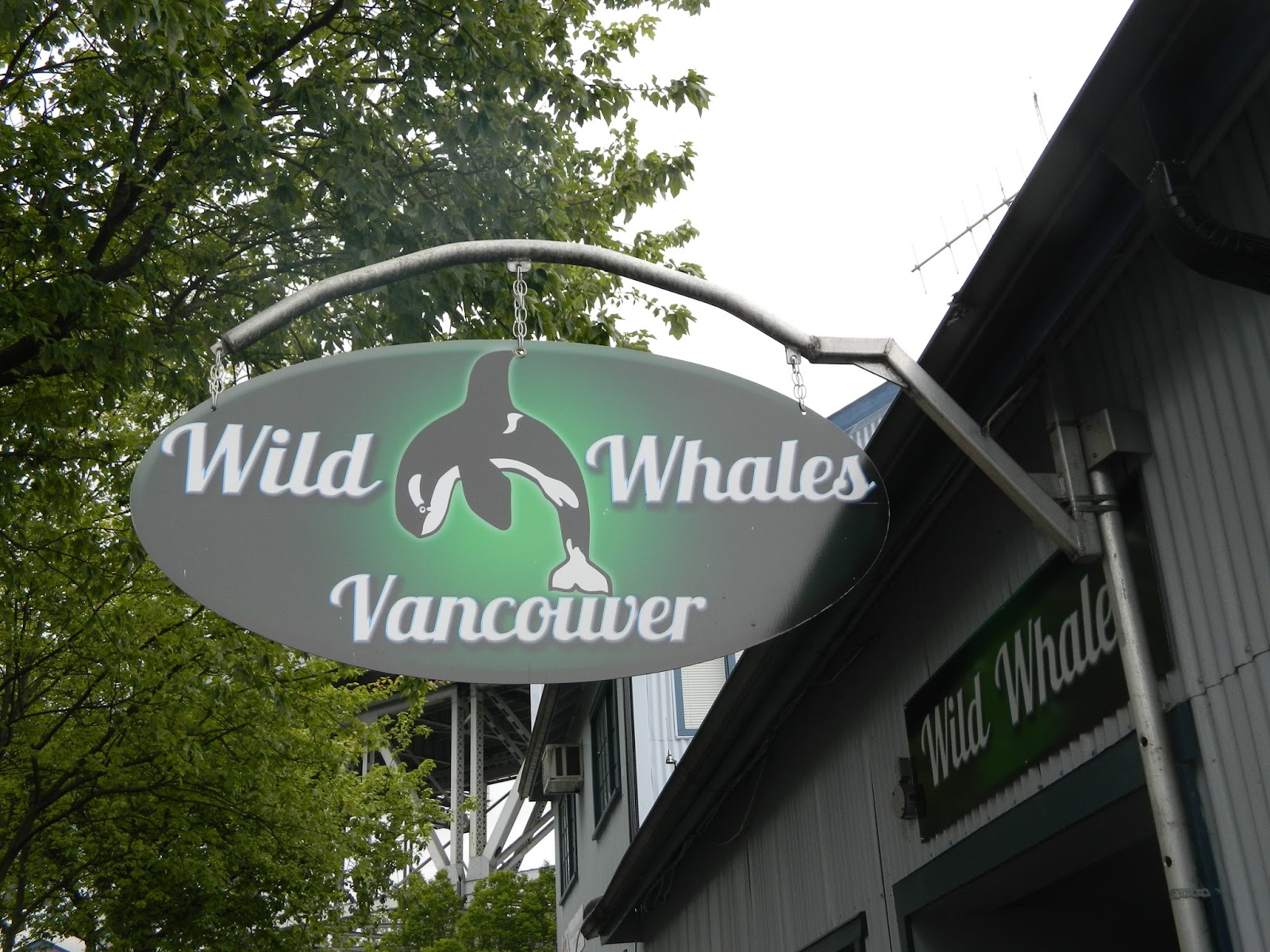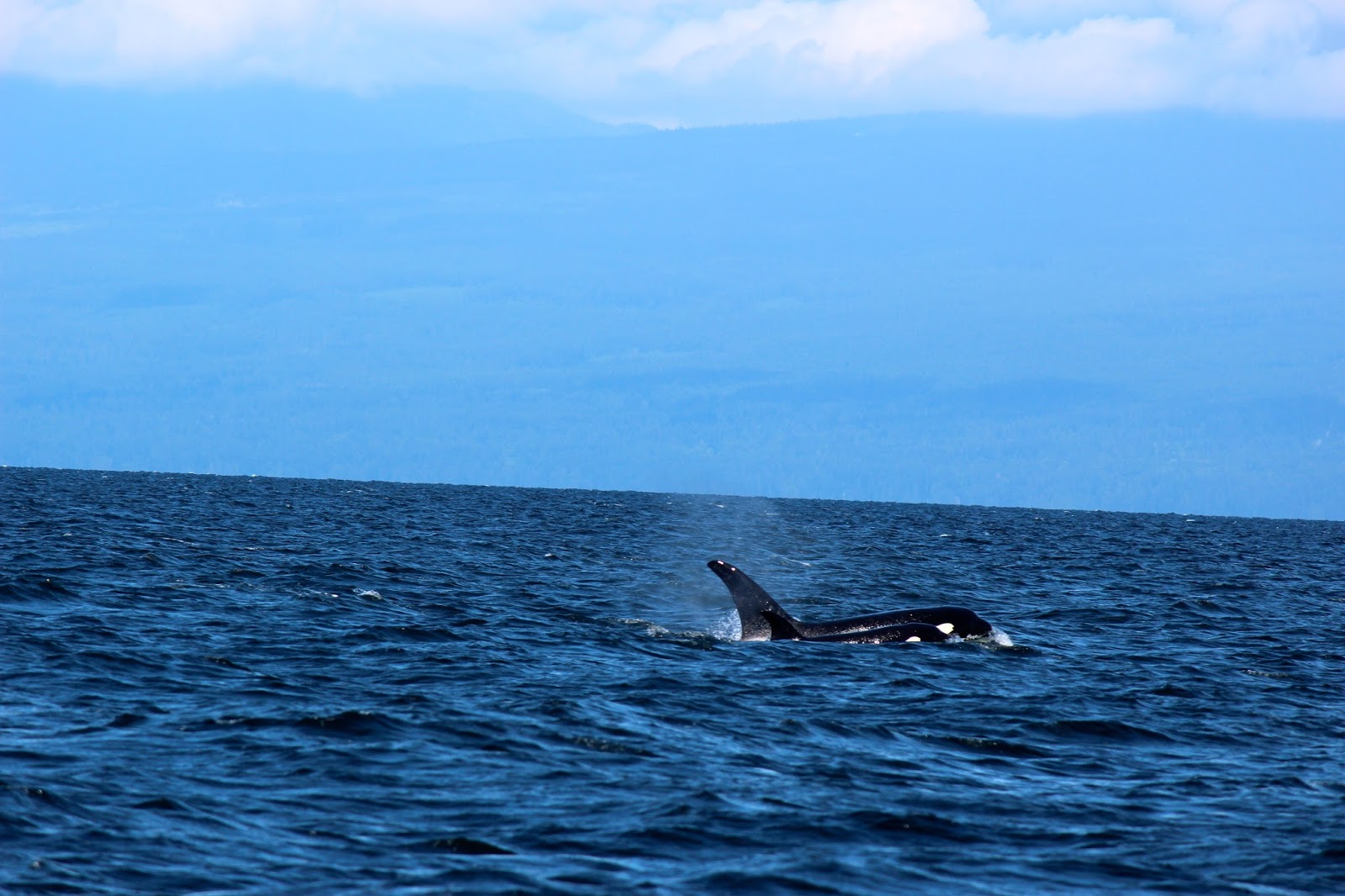My parents are currently visiting me in gorgeous Vancouver, British Columbia, so I am taking advantage of their time here to do things I would not regularly do. For example, I do not usually spend my limited funds going onto a boat to find whales. So, hooray for us and this unusual excursion!

We booked with Wild Whales Vancouver (follow the link to book yourself), located on the famous and busy Granville Island. Prices range from 85$ to 135$ CAD (+5% tax) per person, but the service and sights are well worth the price as you all will shortly see.
Vancouver, and to a greater extent, British Columbia has amazing biodiversity and complex ecosystems, both terrestrial and aquatic. The rich micronutrients of the Salish Sea allow Orcas (killer whales) to remain here all year round as well as make these waters a passage for other, migratory and transient cetaceans.
This environment and we foreigners ultimately can thank its indigenous peoples who have maintained this land for time immemorial for these conditions. The Coast Salish peoples, a linguistic/ethnic related group with diverse identities, were and continue to exist here as the first residents. The Musqueam people whose land is now currently where UBC sits are included in this group.
The tour boats go out only once a day, and the tours themselves can last up to 7 hours! The travel time through the Georgia Strait can vary depending on where the whales are and the weather. Most tours leave in the late morning (10:00 AM – 12:00 PM), so do not plan much for the afternoon or at least be flexible about your evening. It can be exhausting just sitting. I know, it sounds weird. I blame the sun exposure; the boat we were on was open air.

(Photo credits by PintsizedPioneer)
Apparently, the whale watching tour groups, of which there are approximately 5, work together to let everyone see the whales. Spotting the whales, navigating there, and then keeping up with them can be difficult, so the companies radio each other and also keep track of where the whales go for others’ research purposes. It is for everyone’s benefit to know where the whales are and to relay this information.
Our guides were both energetic, marine life and zoology interested youths with science backgrounds who were able to effectively disseminate information even through wind and wake.
It is hard to talk for hours especially on the water, but they made sure everyone was well cared for and understood where we were going, what we were looking at, and whose waters we were on. I was extremely impressed that the main guide mentioned the First Nations peoples’ influence here. Well done.

Luckily, our group got a call that transient Orcas were found close by, not too far out into the Strait. This area has two populations of Orcas: the resident and transient. The resident variety eat the Chinook salmon and other large fish in these waters and stay here yearly while the transient hunt mammals including seals, sea lions, and porpoises and travel outside the Salish Sea.
Orcas are extremely intelligent, have matriarchal societies, and are actually classified as dolphins. Their dolphin-esk skulls are why they are so smart compared to other whales. Females live up to around 100 years, and males usually live until they are 70 years old.
Males can be identified by their massive dorsal fins, which are iconic in indigenous art from this region.



(Photo credits by PintsizedPioneer)
The boat uses a suction motor to not impede on the whales health if they are to get close to the boat. They can be attracted to surface disturbances, and metal motors can be harmful. Additionally while a boat is close to the whales, regarding federal regulations (100 meters I believe for Canada), it must go slowly for the whales’ and passengers’ sakes. We do not want to scare them.
Orcas use echolocation like other cetaceans and have specific marking at the bottom back of their dorsal fins. Researchers use these markings to label and name them (scientifically of course) for gauging population and to monitor the whales’ health.

Humpbacks also travel through the Georgia Strait; however, we did not see any to our dismay. But, we did witness other wildlife including bald eagles and Pacific harbour seals.
I can say after living here for almost a year, I am no longer impressed by bald eagles. They are loud and not majestic. They squawk outside my window sometimes; it is infuriating. However, seals are adorable water dogs. I still love ’em.

The tour lasted for around 5 hours in total. The staff offers energy bars and complimentary water, but one should probably bring a lunch too. Luckily, the Granville Island Market is a famous marketplacethat sells sandwiches, pastries, and a variety of salmon jerky! The tour group provides plastic bags too to keep one’s belongings dry, so do not fret about cellphones and noshables.

Overall, the tour was well guided and lively. One of the trainees was so excited every time he saw a fin he would pop up. And, although the wind was rough, which meant we got soaked, it was all part of the adventure.
I would definitely recommend one takes at least one boat ride while in Vancouver. It could even just be the sea bus or a ferry, but traversing the water is essential in understanding the appeal of this place for so many people and its history as a shipping and colonial maritime city as well as pre-colonized lands.
If one takes a tour, seeing the wildlife is an added bonus. Personally, I think a whale watch is the best introductory way to understand the diversity of this region, both biological and indigenous. I also would recommend hiking and biking, but I’ll have to find some other time between my busy work schedule to begin to review those activities.
July is festival season, so at least y’all will be able to hear about that craziness. I think I can switch gears from nature tour reviews to hippy, music festivals pretty seamlessly. We shall see!
For now, stay tuned for more about generous and plentiful British Columbia! I am also currently figuring out how to get to Scotland and France, so we’ll see about that too … travel onward!
It is very majestic to sail beside a whale in the water. You have a fear but also a curiosity. Will the whale jump up and turn my sailboat over. Whale watching is a wonderful past time that you will never get tired of doing. Sitting on a sailboat with binoculars in hand is a wonderful way to end a long day at sea.
Agreed! And, sustainable eco-tourism is always a plus. Thanks for the comment!